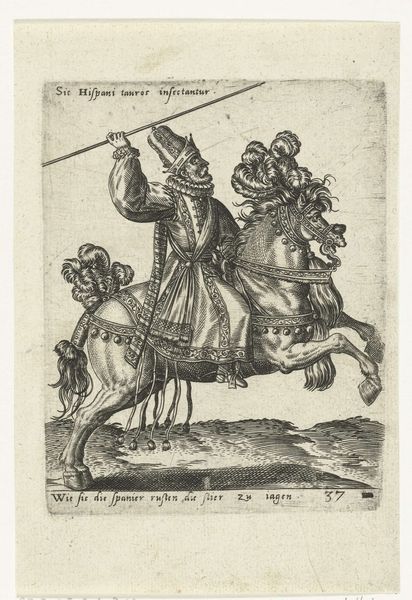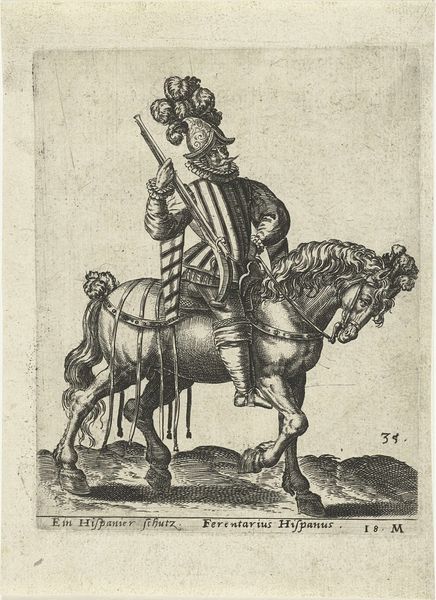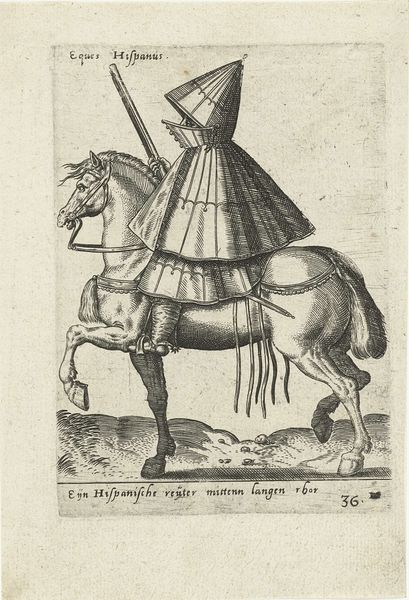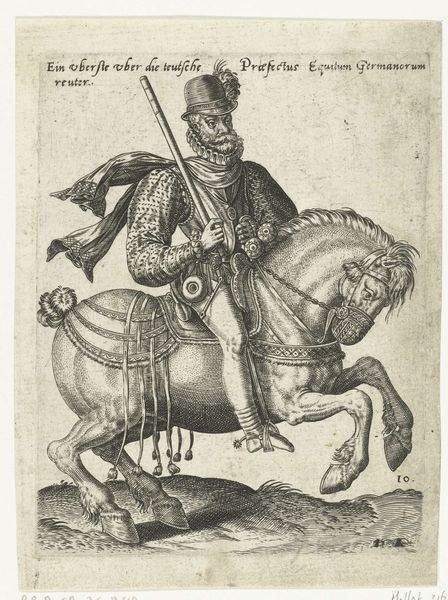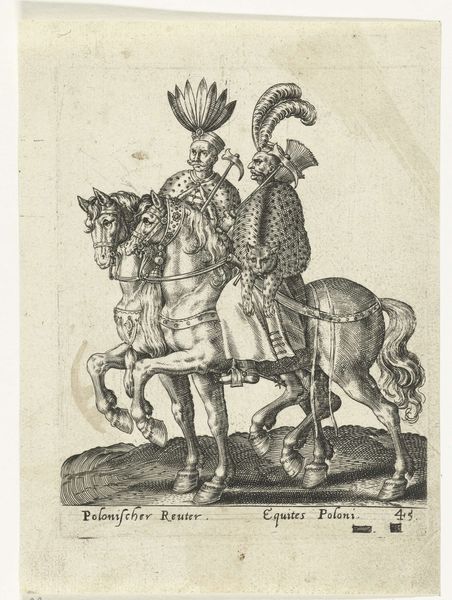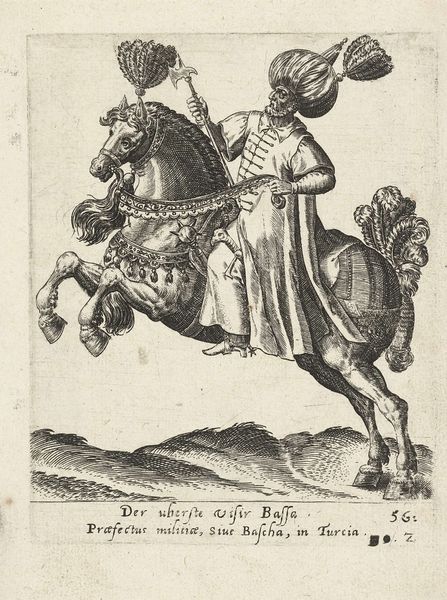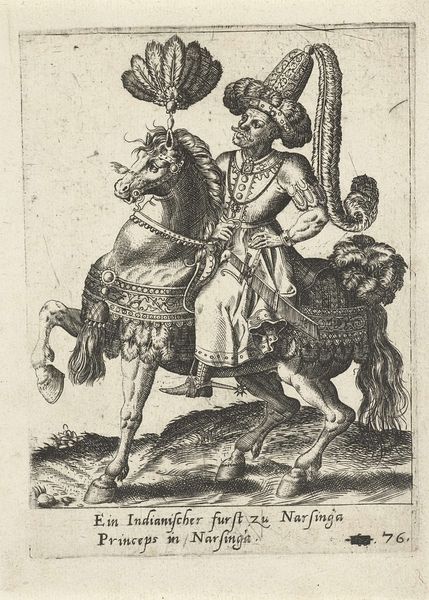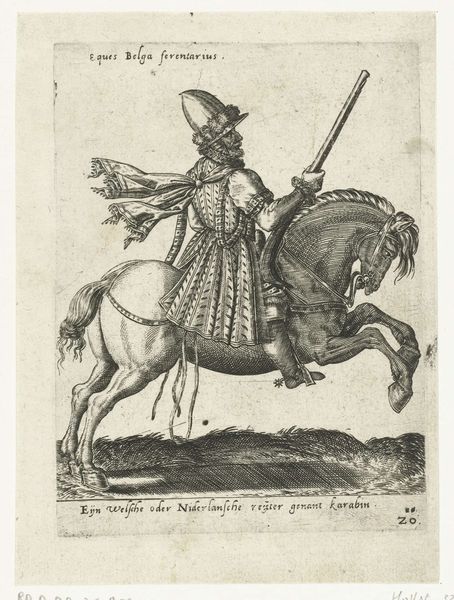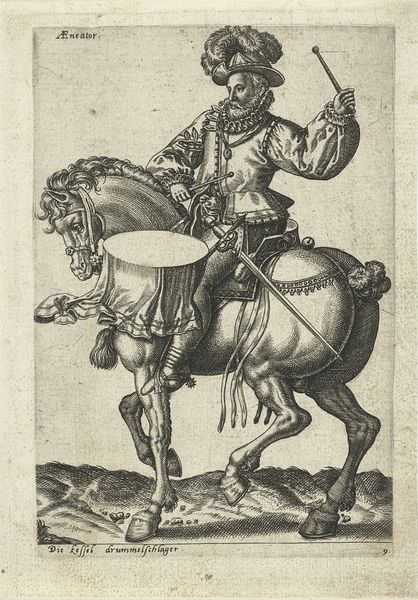
print, engraving
#
portrait
# print
#
pen sketch
#
figuration
#
form
#
genre-painting
#
italian-renaissance
#
engraving
Dimensions: height 140 mm, width 114 mm
Copyright: Rijks Museum: Open Domain
This is an engraving by Abraham de Bruyn, made around 1575, depicting a French rider with a pistol. At first glance, the image is a study in contrasts and controlled chaos, with a rearing horse and rider dominating the composition. De Bruyn's use of line is striking. Notice the intricate detailing in the rider's clothing and the horse's musculature achieved through fine, dense lines. The lines create texture and volume and invite the viewer to decode the social status of the rider through his lavish garments and the proud, almost arrogant, posture. The rearing horse is a powerful symbol, traditionally associated with nobility, strength, and war, reflecting a specific cultural code of the time. Yet, this image is more than a mere depiction of power. By using the semiotic system of signs to communicate, De Bruyn's use of linear patterns, is not just a visual technique but also challenges fixed meanings about perception, power and representation in the 16th century. It's a dynamic interplay between chaos and order, a visual debate that invites ongoing interpretation.
Comments
No comments
Be the first to comment and join the conversation on the ultimate creative platform.
